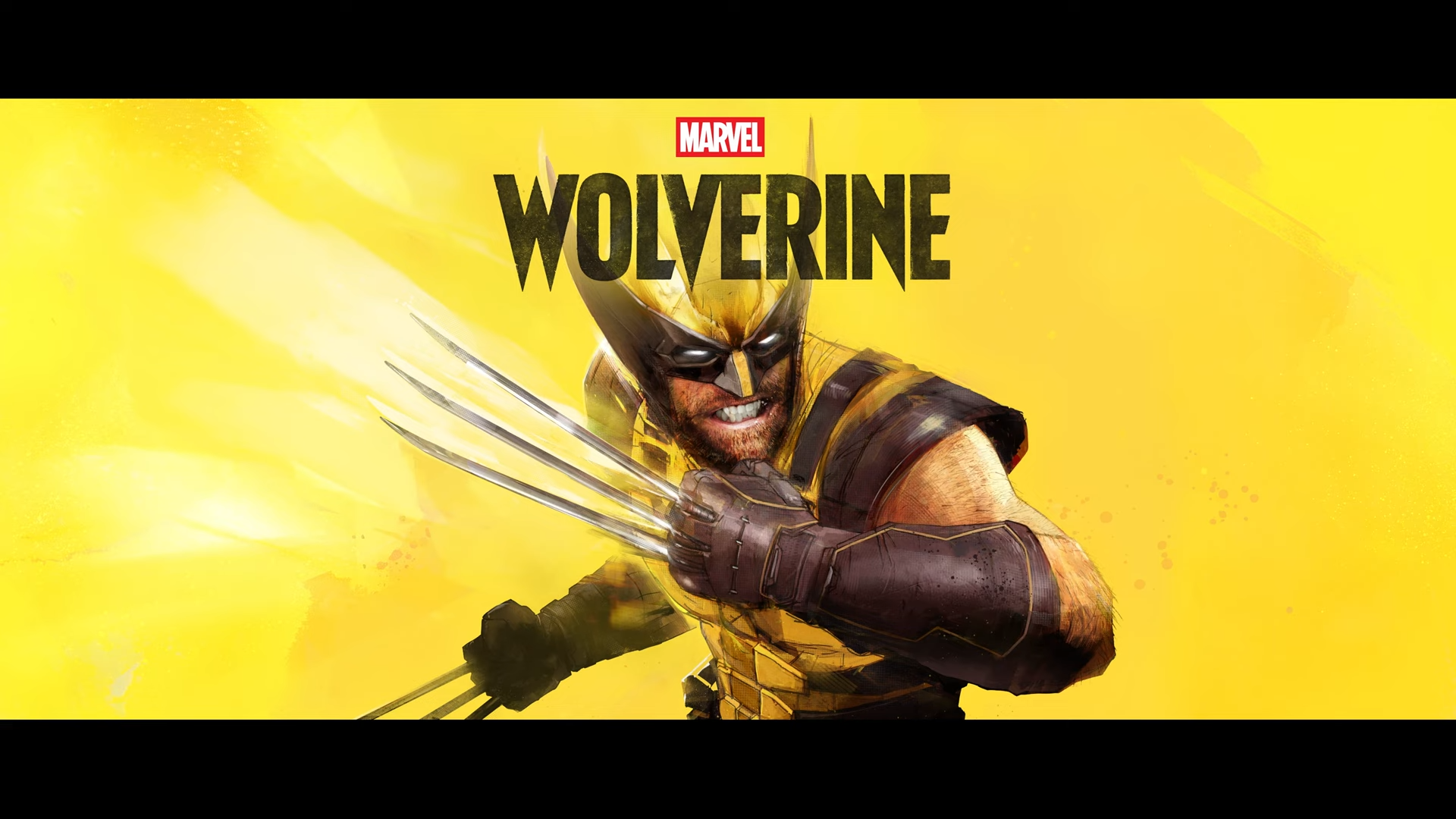Tom's Guide Verdict
The Nikon D7500 is an advanced-enthusiast DX-format camera that impresses with its top-notch image quality and blazingly fast performance.
Pros
- +
Excellent image quality
- +
Speedy continuous shooting
- +
Fast autofocus
- +
Responsive touch screen
- +
Extensive feature set
Cons
- -
No dual card slots
- -
4K video cropped
- -
AF erratic in video capture
Why you can trust Tom's Guide
On paper, it might seem like the Nikon D7500 is a step back from its predecessor, the D7200. The D7500 has fewer megapixels (20 MP, as opposed to 24 MP in the D7200), lacks a second card slot and doesn't work with older lenses. However, the new camera ($1,250 body only; $1,750 with 18-140mm kit lens) has the same sensor and image processor as the higher-end D500 — more than enough reason to ignore the loss of several megapixels.
The D7500 also has faster continuous performance, a responsive tilt-screen touch LCD, higher ISO capabilities and 4K video, making it one of the best DSLR cameras for enthusiast shooters.
Design: Functional, efficient and familiar
At 5.4 x 4.1 x 2.9 inches and 22.6 ounces (body only), the D7500 is just a shade smaller and about 5 percent lighter than the D7200. In fact, other than the relocation of a couple of buttons, a new LCD, a deeper grip and only a single (versus double) SD card slot, there are few visible physical differences between the two cameras. Although you can't see it, the durable body features improved weather sealing, too.
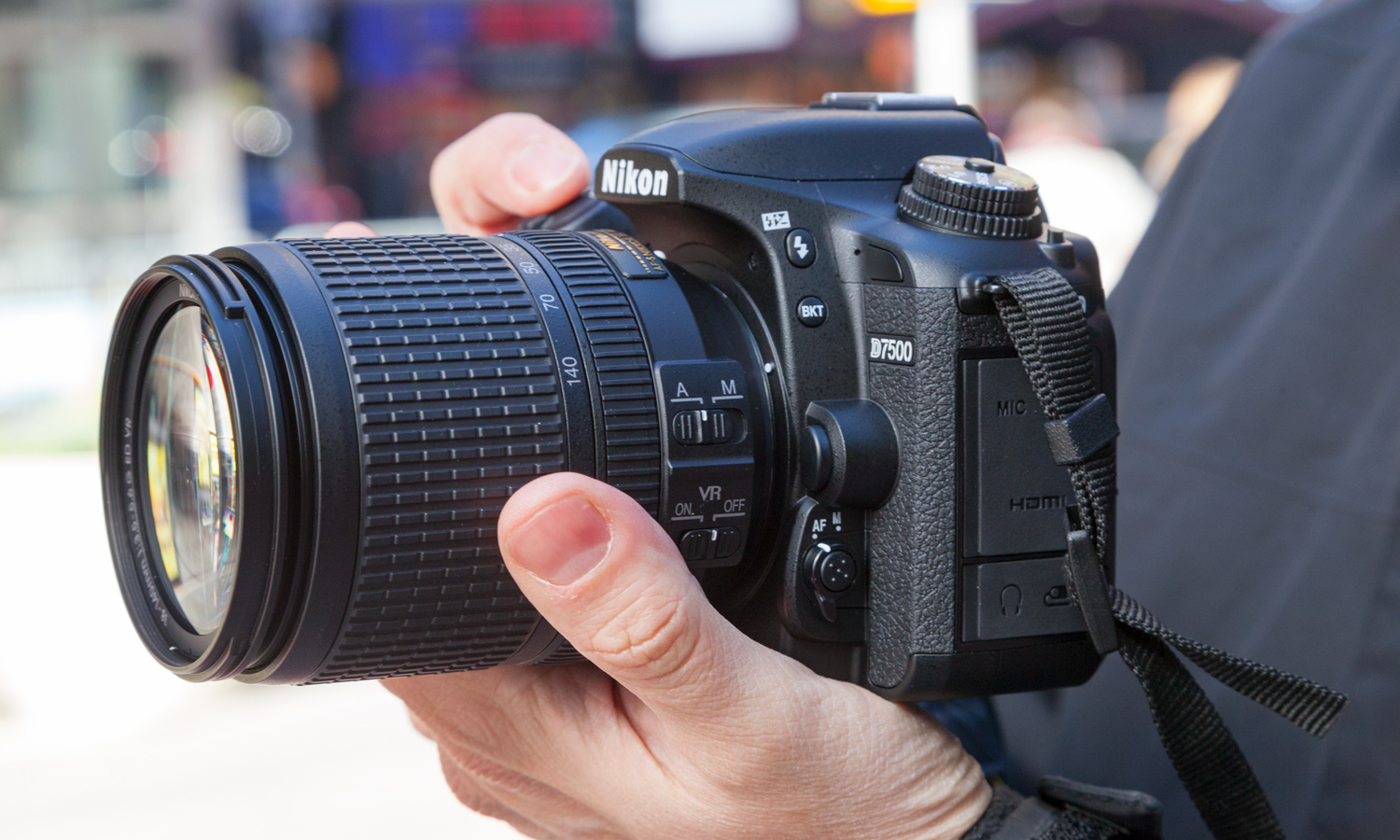
A new, tiltable, 3.2 touch-screen LCD graces the back of the camera. It's responsive and features touch focus, touch shutter (tap to focus, tap to shoot), and full touch access to menus and playback options, including scrolling and pinch to zoom.

Comfortable to hold, especially with the deeper grip, the D7500's external controls and dials are conveniently located and easy to use. Dual control dials and a top LCD panel provide more efficient access to features and to displays of the current settings.
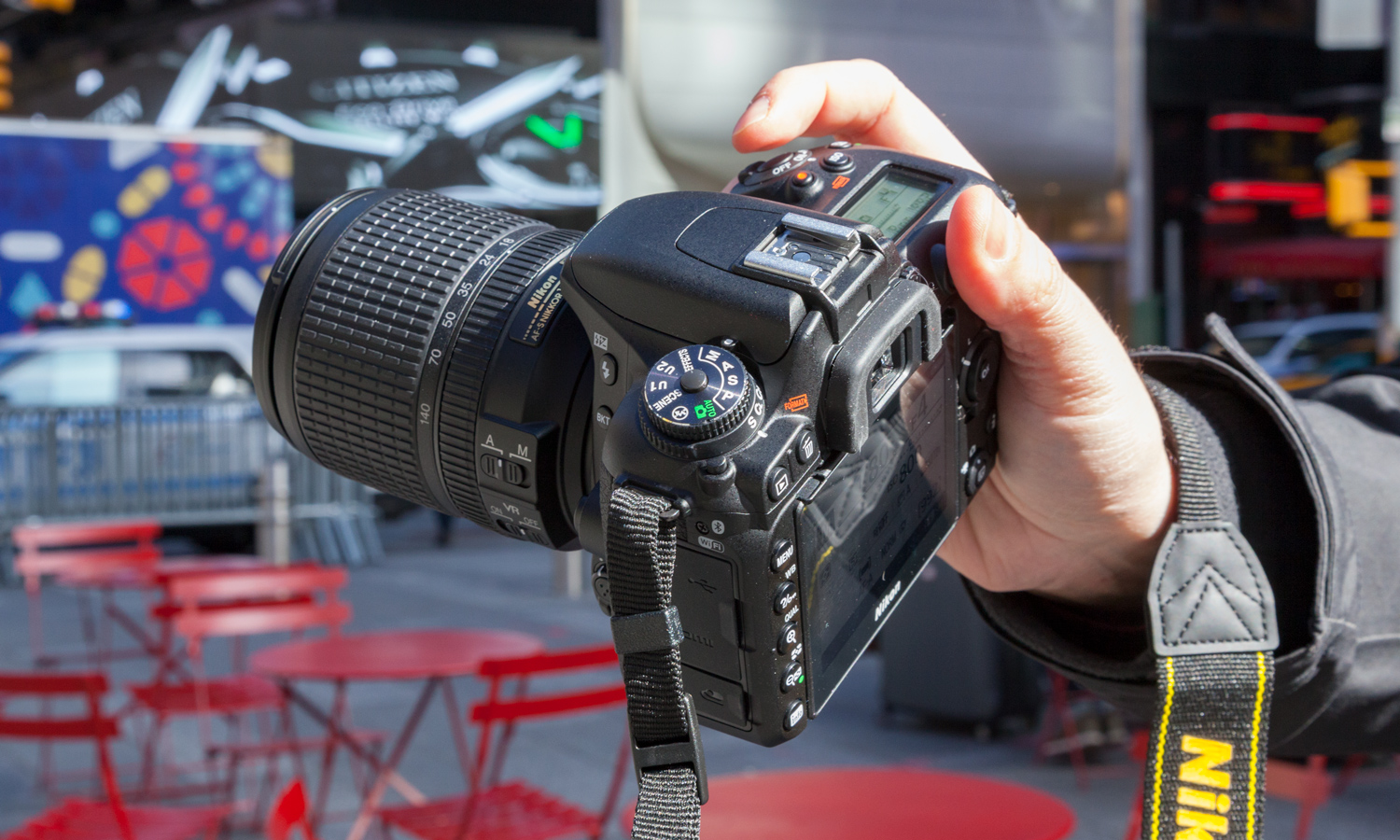
Even if you're stepping up from an entry-level Nikon D3400, many controls and features will feel familiar. While less-experienced photographers may face a learning curve with the advanced options, Nikon's built-in help explains most features in easy-to-understand terms.
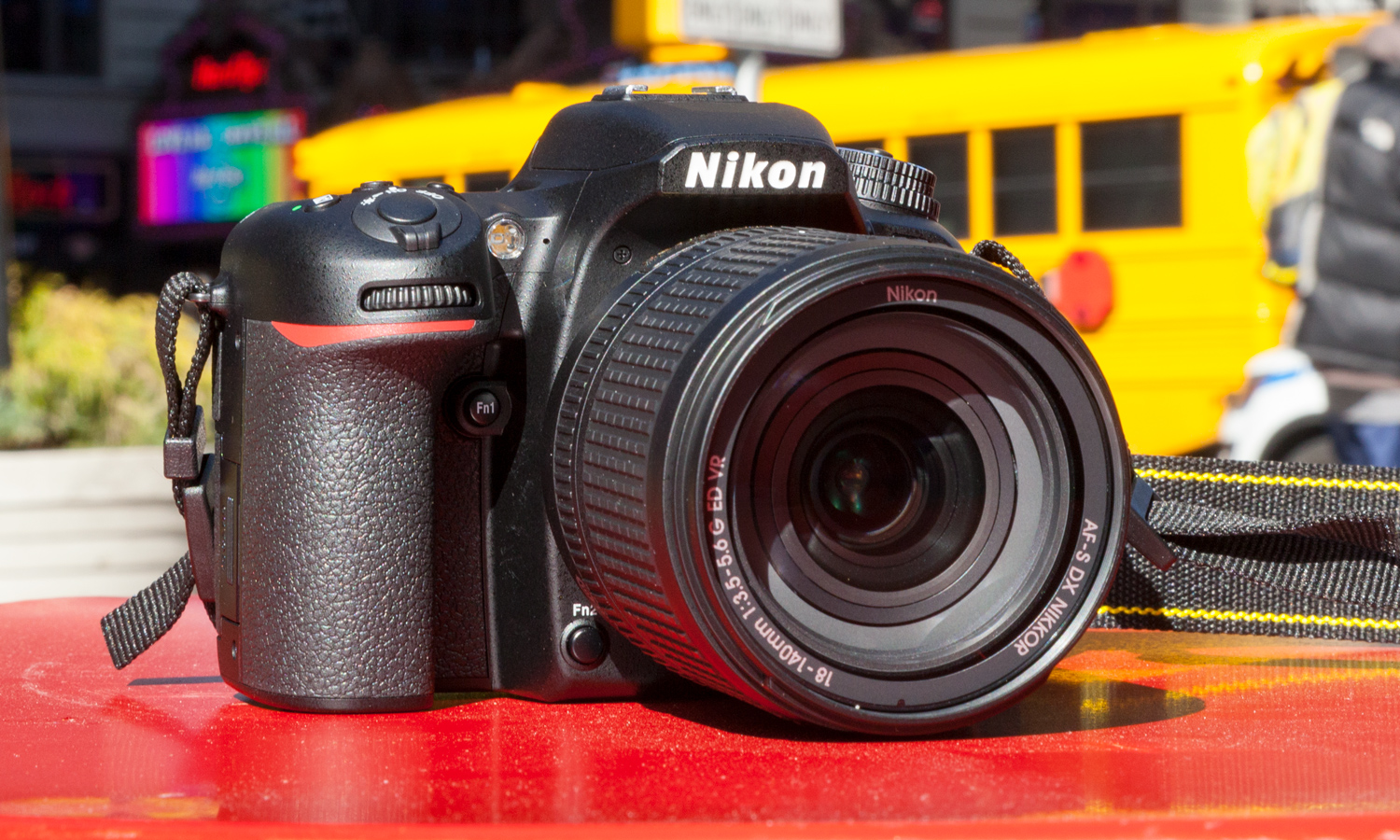
The D7500 has a pop-up flash and a hot shoe for an external flash, and is compatible with the new SB-5000 Speedlight. It's very disappointing to lose the second SD card slot found on the D7200, especially given the new camera's high speed, high-capacity continuous shooting and 4K UHD video capture.
Get instant access to breaking news, the hottest reviews, great deals and helpful tips.
Image Quality: Excellent as always
Like the D500, the D7500 produces excellent images. Colors are rendered accurately and can be tweaked according to your personal preferences using the camera's Picture Control. Sample images were shot using the Standard (SD) Picture Control and are straight out of the camera JPEGs.
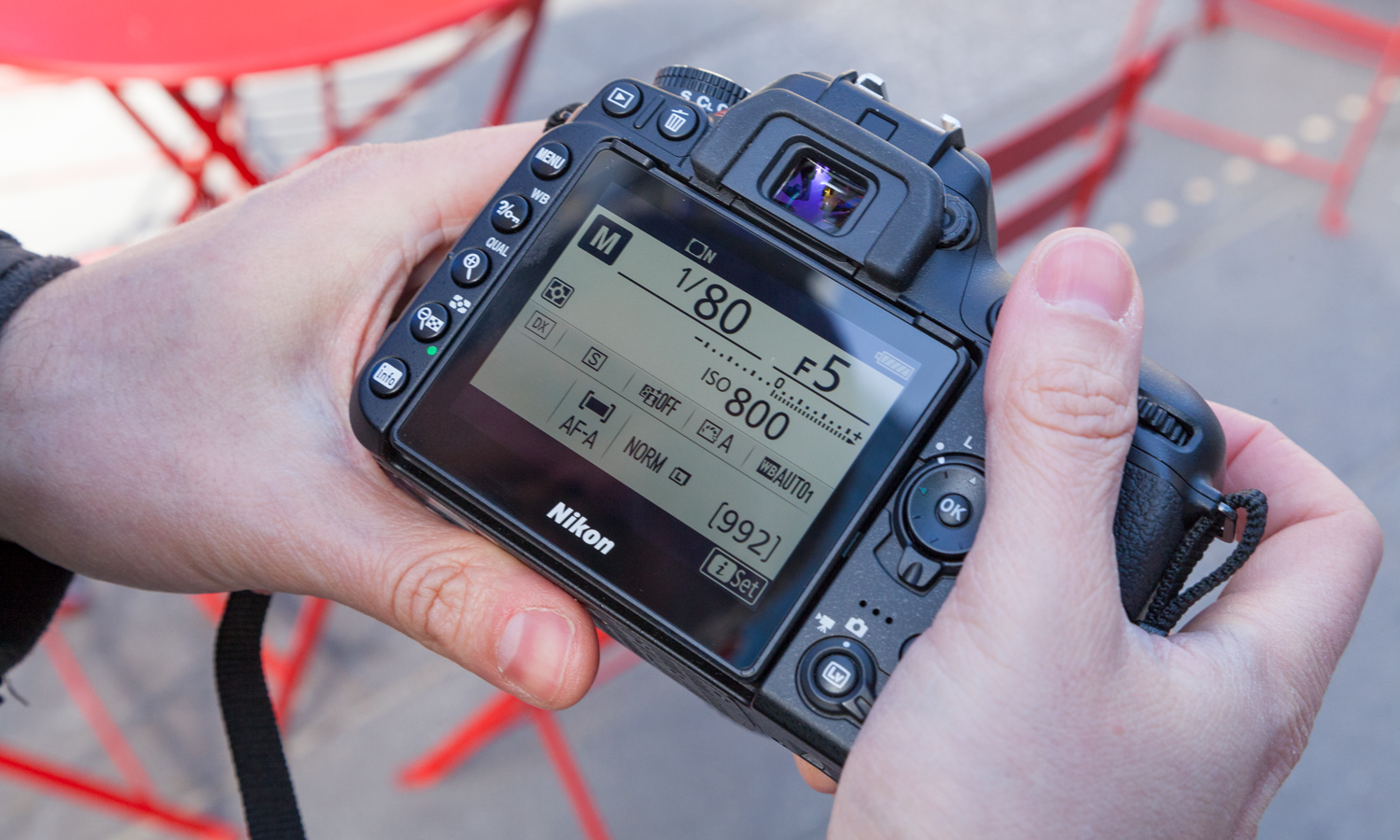
Exposures were generally spot-on in semiautomatic modes (aperture or shutter priority) with good dynamic range that retained details in shadows and highlights. But when faced with challenging, high-contrast scenes, the D7500's ADL (Active D-Lighting) can help solve any imbalance. Although the differences are subtle, the second shot, which was captured with ADL, shows slightly more detail in the walkway (especially in the highlights at the bottom of the image), as well as in the darker shadows of the trees on the left side. You can also set up ADL bracketing for a wider range of choices.

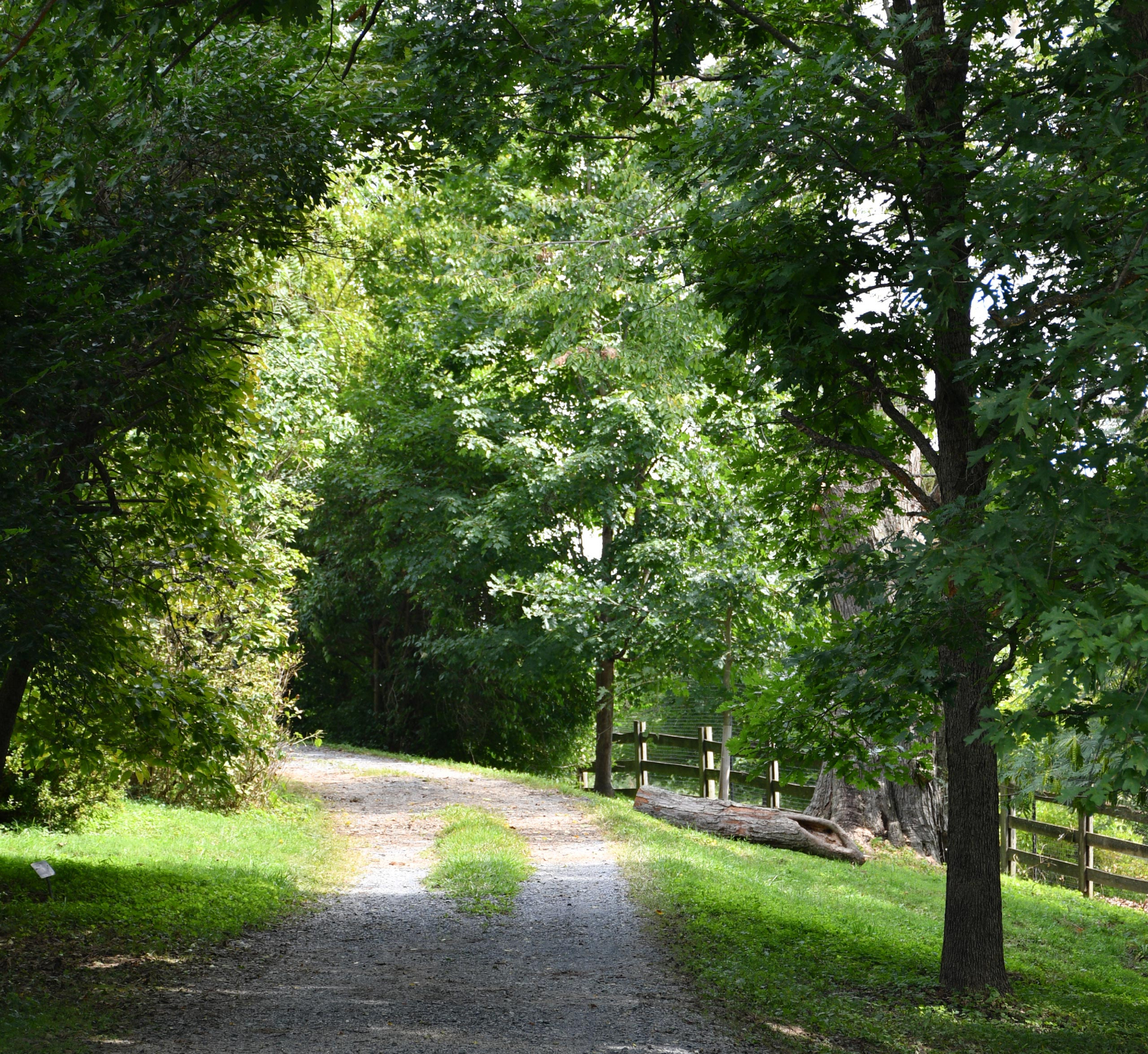
The D7500's ISO range beats out the D7200's with options from 100 to 51,200, and expandable to 1,640,000. Low-light/high-ISO capabilities are quite good, although we'd recommend sticking to ISO 6400 or lower for the best results.
When faced with challenging, high-contrast scenes, the D7500's Active D-Lighting can help solve any imbalance.
Generally, I prefer to deal with noise reduction using photo-editing software, but the D7500's high-ISO NR did a great job. High-ISO NR can be set to Off, Low, Normal or High. The first sample image was shot without NR turned on, and the other with NR set to High. The latter seems a little oversharpened but can be easily dialed back, saving time in postprocessing on the computer.
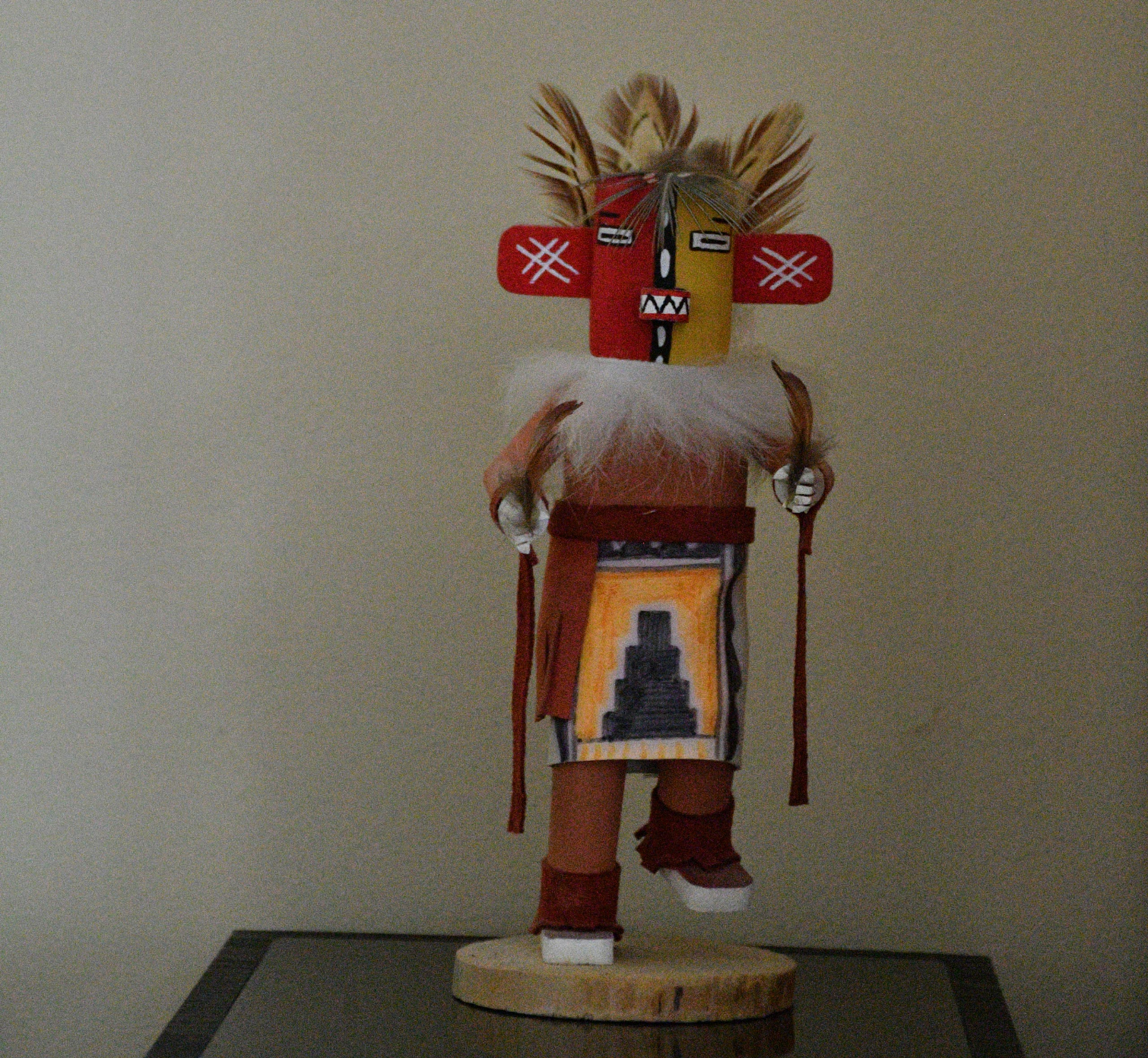
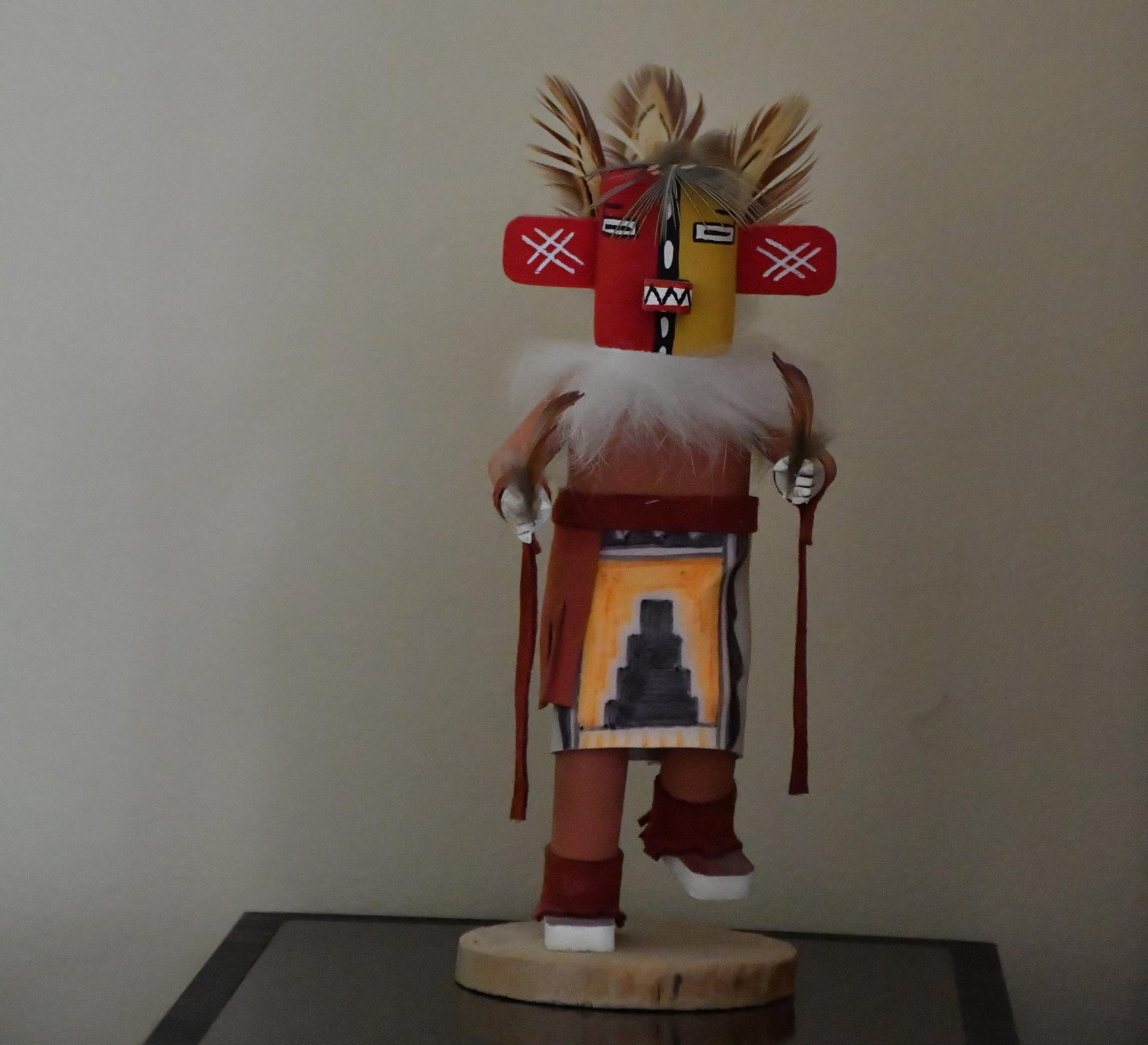
Test images were captured with the 18-140mm f/3.5-5.6G ED kit lens. With the DX-format sensor, the 35mm-equivalent focal range is 27mm-210mm, which provides a highly usable balance for wide-angle and telephoto needs. At f/3.5-5.6, the lens is a little slow and best used under bright conditions. But thanks to the camera's strong low-light/high-ISO performance, and the lens' effective VR (vibration reduction), I didn't miss the wider apertures of our other lenses as much as I thought I would.
MORE: A Guide to All of Nikon's Lenses
Images captured with this lens were sharp, thanks in part to the camera's lack of an optical low-pass filter (which softens images to avoid moiré). While higher-end lenses should capture sharper details, this kit lens delivered better-than-expected results, as you can see in the textures of the bales of hay and the fabric petals of the faux sunflower in the photos below.

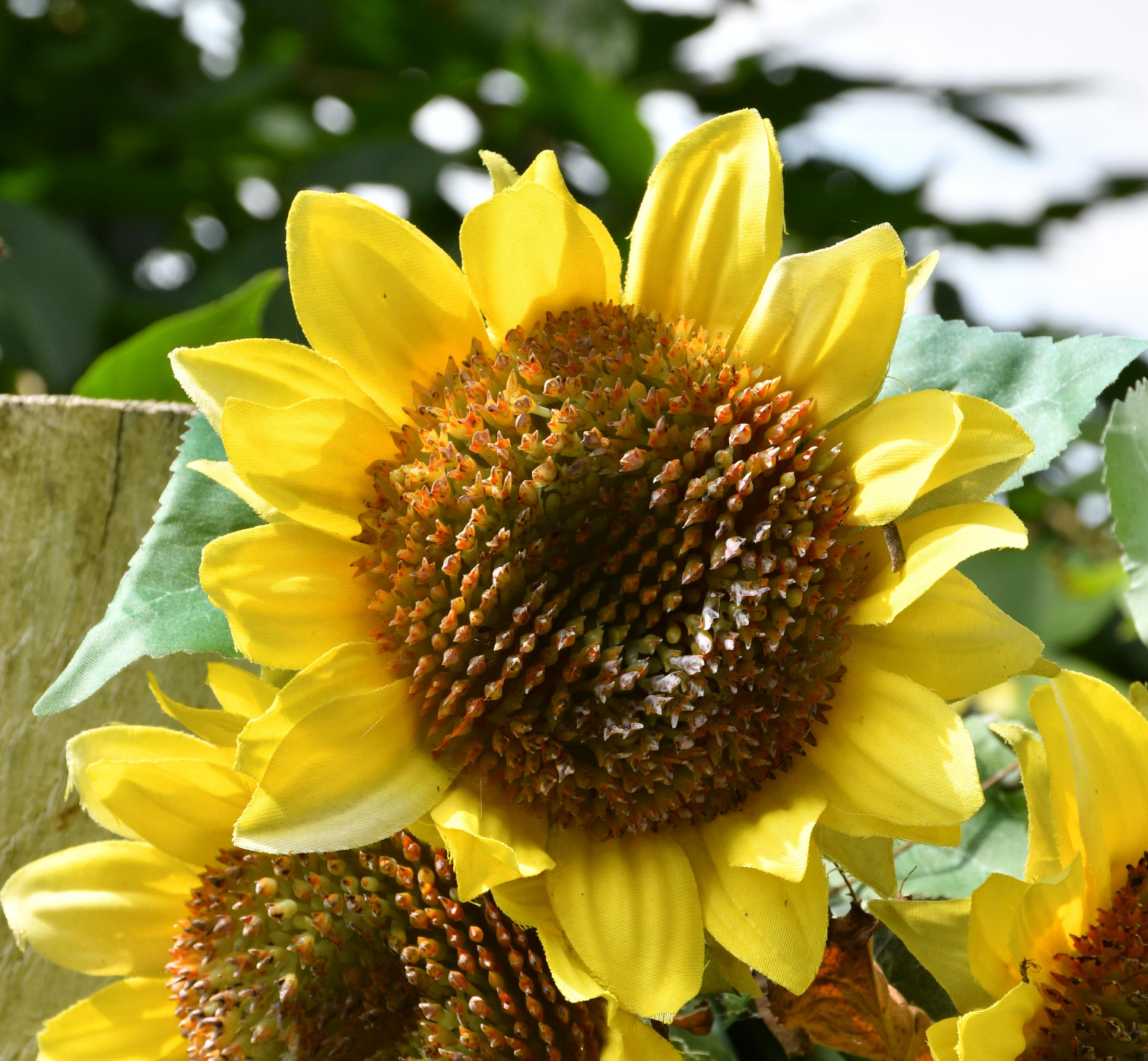
There was very little haloing or chromatic aberration. And with the Vignette Control turned on and set to normal, there was no noticeable shadowing in corners, as you can see in the photo of a barn below.
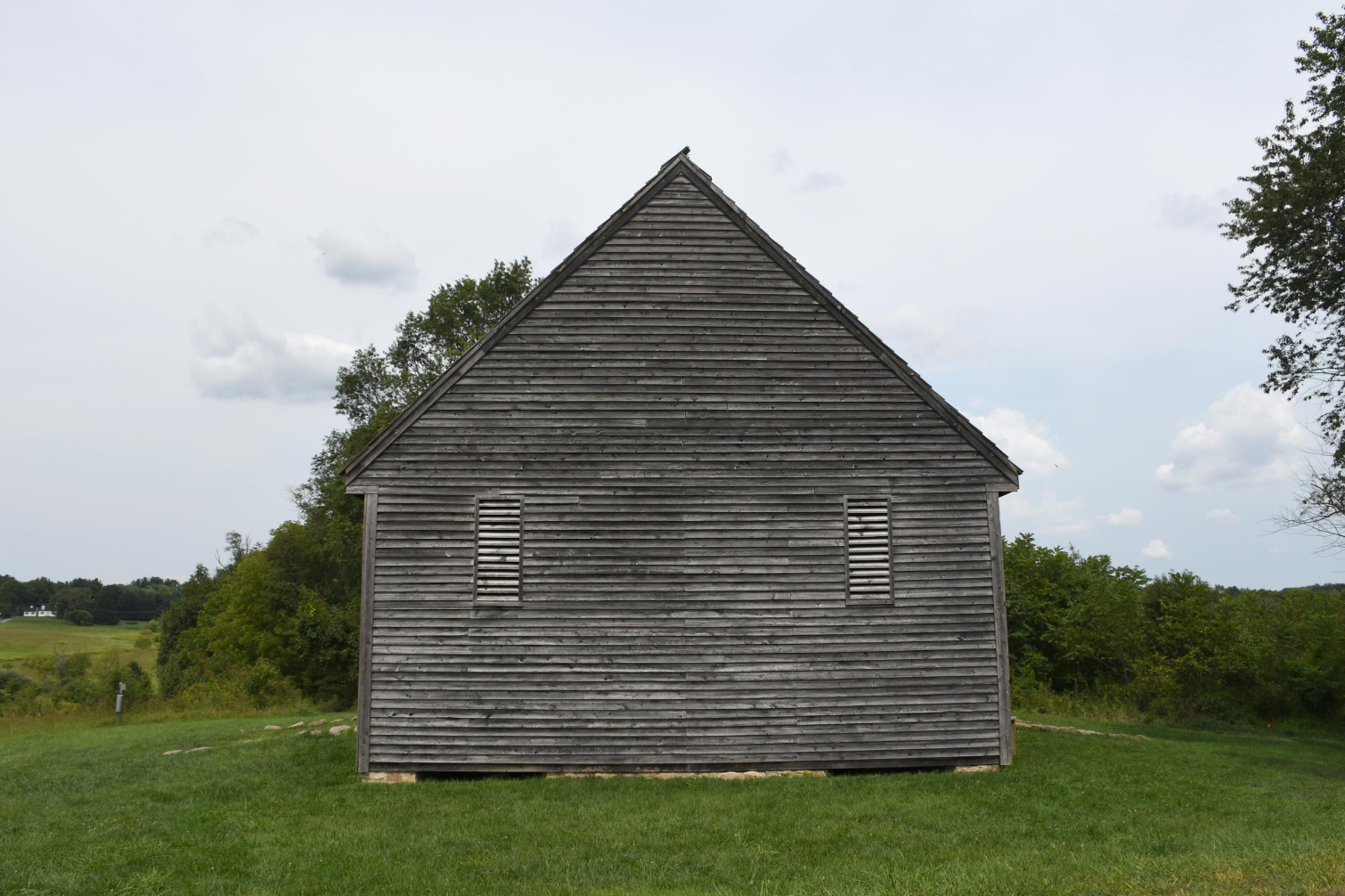
Given that the D7500 straddles the enthusiast and semipro photographer line, I wanted to see how it worked with studio lighting. As you can see from the portrait below, the camera provides a nicely focused image, rich shadows and good color balance for this dramatic lighting. With a black backdrop, I didn't have to worry about creating a blurred background, so I set the f/stop to 7.1 to gain some depth of field.

The D7500 is also great for candid shots, like the one below. I was impressed with the camera's matrix metering, which takes into account the entire scene when calculating a proper exposure. The reflection of the water could have easily thrown off the meter, but the D7500 didn't flinch when shooting in shutter-priority mode and perfectly exposed the subject as well as the water.

In addition to manual, semiautomatic and automatic modes, the D7500 offers a number of options for Effects and Scene (portrait, landscape, night landscape, pet portrait and more). The former offers more creative automatic modes, including Pop, Vivid and Toy Camera, along with Photo Illustration and Night Vision.

Photo Illustration turns photos into funky-looking images that are a little edgy and kind of fun.
Video: Good but with caveats
On paper, the D7500's video specs look great. You get a range of recording options: 3840 x 2160 (4K UHD) at 30/25/24fps, 1920 x 1080 full HD at 60/50/30/25/24fps and 1280 X 720 HD at 60/50fps. 4K footage can be recorded to the camera's media card or output via HDMI or both. Other features include manual exposure controls and multiple audio options (including an external microphone jack).

When I used the Standard Picture Control, video clips look sharp and nicely detailed, and the internal microphones pick up sound quite well. If you want to do your own color grading, you can use the flat profile option. Video can be recorded in user-friendly MOV or MP4 formats.
We're happy to see 4K video capture added to the D7500.
That's the good news. The bad news is that continuous AF isn't as smooth as we'd hoped (AF is so fast and accurate in still-image shooting that we anticipated the same for video). I found that it was best to focus prior to recording, although — in many cases — using the touch focus was faster than the hunting of continuous AF.
Using the command dial to change the aperture while shooting is noisy, so unless you plan to create your own soundtrack, you should use an external microphone, enable the Power Aperture (which allows you to adjust aperture more quietly by pressing and holding the Fn1 and Fn2 buttons) or set the aperture beforehand. Fortunately, Auto ISO works in Movie mode and is pretty good at automatically (and quietly) adjusting exposure during recording.
It's also important to note that 4K video employs a 1.5x crop, so you'll need a wider-than-average lens for those wide shots.
All in all, however, we're happy to see 4K video capture added to the D7500. The footage looks good, and there are plenty of options available for both beginner and advanced users. While we'd love to see Focus Peaking to check video focus, the D7500 does offer Zebra stripes to see if highlights are blown out.
Here's a handheld sample I shot (apologies for the shaky footage) in 4K with auto ISO. The latter did a good job with exposure. Focus was locked in using touch focus on the LCD screen.
Nikon is known for including interval shooting in its DSLRs but goes one step further on the D7500 with Time-Lapse Movie. You set the interval between shots along with how many shots you want recorded, and the camera automatically creates a silent movie from the still images. Importantly, the D7500 includes an Exposure Smoothing option that automatically adjusts the exposure if and when the lighting changes during the extended shooting session.
Performance: Fast and accurate
Nikon has bumped up the continuous shooting speed on the D7500 to 8 frames per second (from 6 fps on the D7200). With the D7500, you also get a larger buffer, which more than doubles the number of JPEG and RAW files that can be captured in a single burst, upping those counts to 100 and 47 shots, respectively.

Autofocus is equally as speedy and accurate, with virtually no shutter lag when shooting with the viewfinder. Live View AF is pretty good but is not up to the viewfinder shooting speed. In Live View, I tend to prefer touch focus, because it seems a little faster and more accurate.
MORE: The Top DSLR and Mirrorless Cameras to Buy Now
At 950 shots per charge, battery life is down a little from the D7200's 1,100 shots. But that's a fairly conservative estimate; the battery should last through all but the most intense shooting days. If you think you're going to need more power — let's say you're shooting a wedding — pick up a second battery ($63). Unfortunately, there are no connections on the D7500 for an external battery grip.
The D7500 employs the same Wi-Fi/Bluetooth SnapBridge technology as some other Nikon DSLRs, such as the D3400.
Bottom Line
The Nikon D7500 is an excellent addition to the company's DX-format camera line. One can almost think of it as the younger sibling to the D500, with the same stellar image quality and incredible speed and AF accuracy. Its video autofocus performance may not be as responsive as that of, say, Canon's EOS 80D, but the D7500 is most impressive because of its image quality and high-speed performance, particularly against other DSLRs in its class.
With its close relationship to the D500, the Nikon D7500 wears several different hats. It's a great option for enthusiasts who want to take their photography up a notch. The D7500 also finds a comfortable place in the camera bags of semipros who want high-quality images and excellent performance without breaking the bank.
Credit: Theano Nikitas/Tom's Guide
Theano Nikitas is a freelance journalist and photographer. She's been writing about photography for more than 20 years, contributing countless reviews of cameras, lenses, accessories and software packages to Tom's Guide. Her work has also appeared in dozens of other magazines and websites, including CNET, DPreview, PopPhoto, Professional Photographer and Shutterbug.
